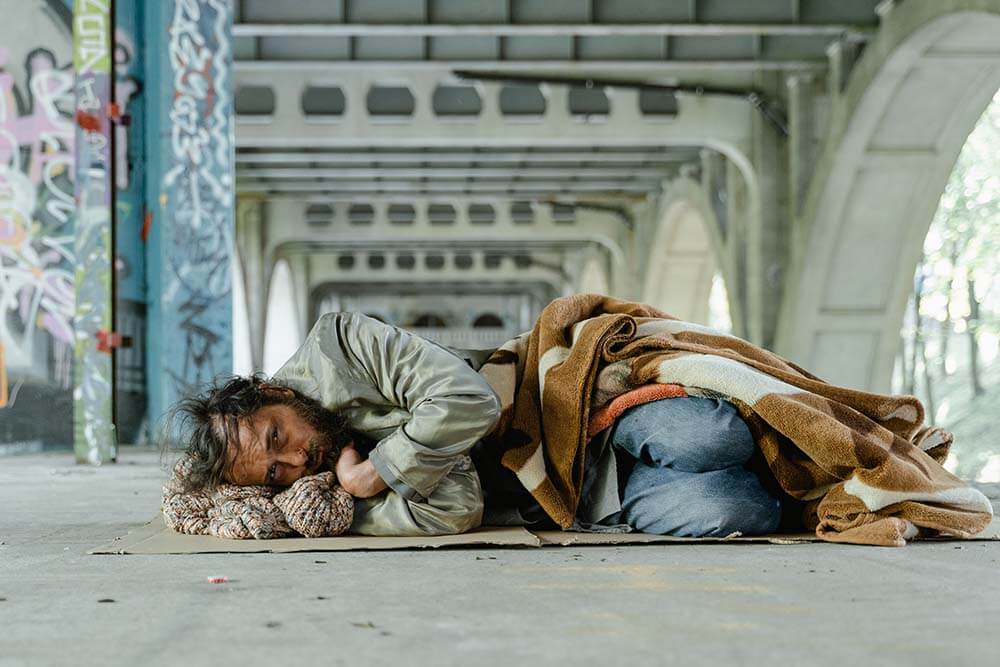Miami is a city that conjures up images of sun, sand, and ocean waves. Tourists flock here to soak up the rays and party in the vibrant nightlife scene. But what about those who call Miami home?
Where do they go when life gets tough? For many, Skid Row might be the answer.
Skid Row is often associated with homelessness and poverty. It’s a term used to describe an area of a city where people are struggling to get by. In Miami, however, finding Skid Row isn’t as simple as looking for a specific neighborhood or street corner.
So where exactly is Skid Row in Miami? Let’s explore this question and see what we can uncover about one of the most complex cities in America.
Understanding Skid Row: What It Is And What It Isn’t

Defining Skid Row: What It Is and What It Isn’t
Homelessness is a complex issue that affects millions of people worldwide. One aspect of homelessness often discussed in the media and society is skid row.
Skid row typically refers to an area where homeless individuals congregate, seeking shelter, food, and other basic necessities. However, there are many misconceptions about what skid row actually is.
Some people believe it’s a place for drug addicts and criminals; others think it’s a permanent residence. In reality, skid row can be both temporary and permanent housing for those experiencing homelessness.
It’s important to understand that not all homeless individuals live in skid rows or even in urban areas. Homelessness manifests itself differently depending on geographic location, economic status, and other factors.
Therefore, defining skid row isn’t always straightforward.
The Challenges Of Defining Skid Row In Miami
As we discussed in the previous section, Skid Row is a complex issue with no clear definition. Similarly, defining Skid Row boundaries and characteristics in Miami proves to be an equally challenging task.
However, there are some key indicators that can help us understand this area better.
For instance, one of the main features of Skid Row in Miami is its high concentration of homelessness. According to data from the Miami-Dade County Homeless Trust, over 8,000 people experience homelessness on any given night in Miami.
This figure includes both those living on the streets and those staying in shelters or transitional housing.
Homelessness in Miami has multiple causes and consequences that contribute to the creation of Skid Row communities.
These include economic factors such as unemployment and poverty, mental health issues, addiction problems, domestic violence situations, and lack of affordable housing options.
The resulting impact on individuals who find themselves homeless ranges from physical harm to emotional trauma and social isolation.
It’s hard not to feel overwhelmed when faced with such a dire situation affecting our fellow human beings.
Here are five ways you can make a difference today:
- Volunteer at a local shelter or food bank
- Donate money or supplies to organizations fighting homelessness
- Educate yourself about the root causes of homelessness
- Advocate for greater access to affordable housing solutions
- Speak up when you see instances of discrimination against people experiencing homelessness
Navigating Miami’s homelessness crisis requires understanding its complexities while showing empathy toward those affected by it. In the next section, we will explore how community efforts are coming together to tackle this challenge head-on.
Navigating Miami’s Homelessness Crisis
Miami, like many other cities in the United States, is facing a homelessness crisis. According to recent statistics, there are over 9,000 homeless individuals living on the streets or in shelters throughout Miami-Dade County.
This staggering number highlights the need for community outreach efforts and support for those who find themselves without a place to call home.
Despite these challenges, there have been several efforts made to address this issue. Community organizations and local government agencies have come together to provide shelter, food, medical care, and job training programs to help individuals get back on their feet.
These community outreach efforts aim to offer much-needed assistance while also addressing the root causes of homelessness such as mental illness, substance abuse, and poverty.
Through these initiatives and partnerships between communities and governmental bodies in Miami-Dade County, we can begin to alleviate some of the problems faced by people experiencing homelessness.
By continuing to work together with various stakeholders from different sectors of society, we can ultimately create long-lasting solutions that will benefit everyone involved.
As we look ahead towards finding solutions for Skid Row in Miami specifically, it’s important to remember that every individual deserves respect and dignity no matter what circumstances they may find themselves in.
While there are no easy answers when it comes to ending homelessness completely, working collaboratively through innovative strategies can bring about real change that helps people rebuild their lives one step at a time.
Finding Solutions For Skid Row In Miami
Now, some may argue that finding solutions for Skid Row in Miami is the sole responsibility of the government. While it’s true that government intervention can play a significant role in addressing this issue, community involvement cannot be overlooked.
Without active participation and support from the local community, any governmental efforts will fall short. The residents of Miami must come together, not only to help provide basic necessities like food and shelter but also to create job opportunities for those living on Skid Row.
On top of that, we need more innovative approaches to tackle homelessness effectively. It’s time for us to start thinking outside the box and come up with new ways to address this problem.
Whether it’s through building affordable housing units or providing education and training programs, there are numerous possibilities that we can explore if we work together as a united front.
Q&A about Skid Row in Miami:
Where is Skid Row in Miami located?
Skid Row in Miami refers to the stretch of Biscayne Boulevard that passes through the Upper Eastside.
Does Florida have a Skid Row?
Florida doesn’t have a specific Skid Row, but the term has been associated with the area along Biscayne Boulevard in Miami.
Why is it called Skid Row?
The term “Skid Row” originated from the presence of “skid roads” in certain neighborhoods. These roads were used to transport logs in the logging industry, and the neighborhoods around them became known as Skid Rows.
Conclusion
In conclusion, Skid Row in Miami is a complex issue that requires our attention and action.
While it may be challenging to define exactly where Skid Row exists in the city, we must not ignore the homelessness crisis that plagues our community. We cannot turn a blind eye to those who are struggling and suffering on the streets.
So, what can we do? How can we help those experiencing homelessness and potentially prevent more people from ending up on Skid Row?
It starts with education and awareness of the issue at hand. We need to come together as a community and work towards finding sustainable solutions for housing, mental health resources, job training programs, and more.
Let’s take action now to make a positive impact on the lives of those affected by homelessness in Miami.




